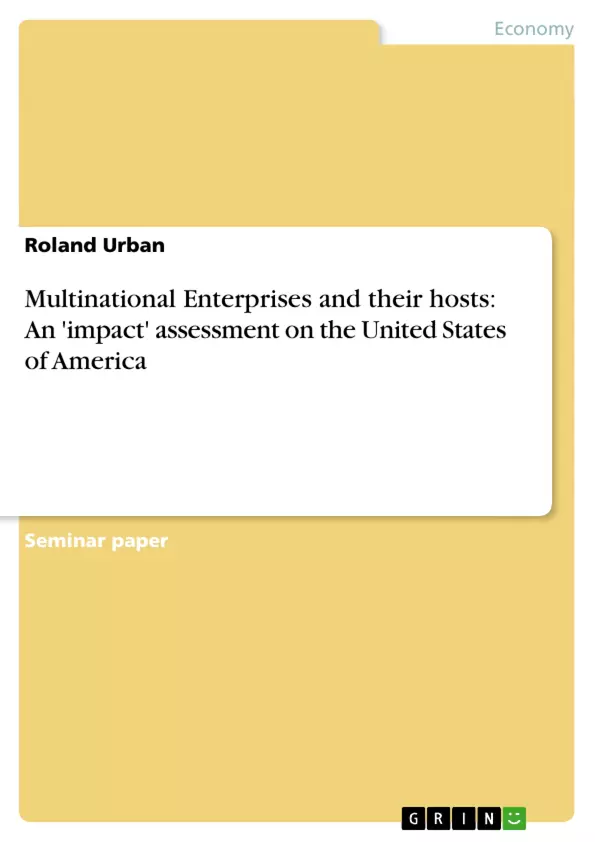The role of multinational companies in the world economy has expanded rapidly over the last decades. Multinationals both react to and a major driving force within the changing world economy1. The globalisation of markets is responsible for the increase in worldwide foreign direct investments. International inflows of foreign direct investment (FDI) amount for around $560 billion in 2003, representing an increase of around 130 per cent over 1990 levels. In terms of its share of global FDI, the United States of America are a major source country worldwide with a share of five per cent of total global FDI inflows in 2003. Furthermore, the United States of America were the last 25 years on position one of the Inward FDI Potential Index published by the UNCTAD23. These foreign direct investments may play a significant role in helping to transfer leadingedge skills, technologies, management styles and other important practises to host economies4. This report is based on secondary research and will assess the impact of Multinational Enterprises on the U.S. economy and is divided into three parts. First of all, I am going to give in my report a brief overview about foreign direct investments into the United States in order to give a good descriptive base for the main part. In the major part I will point out the costs and benefits of foreign direct investments for the United States both in theoretical and empirical terms. After this analysis my report will suggest policy implications based on the assessment of the costs and benefits. 1 Young, St., Hood, N., Hamil, J. (1988) 2 UNCTAD (2004) 3 See Appendix 4 South Centre (1997)
Inhaltsverzeichnis (Table of Contents)
- A. Main Part
- 1. Introduction
- 2. Descriptive base of foreign direct investment into the United States
- 3. The impact of Multinational enterprises in theoretical and empirical terms
- 3.1 Balance-of-Payments effects
- 3.2 Employment effects
- 3.3 Technological effects
- 3.4 Sovereignty
- 4. Policy implications
- B. Bibliography
- C. Appendix
Zielsetzung und Themenschwerpunkte (Objectives and Key Themes)
This report aims to assess the impact of multinational enterprises on the U.S. economy through an analysis of foreign direct investment (FDI). It provides a descriptive base of FDI flows into the United States and investigates both the theoretical and empirical effects of multinational enterprises on the American economy.
- Impact of multinational enterprises on the U.S. economy
- Analysis of foreign direct investment flows into the United States
- Theoretical and empirical effects of multinational enterprises
- Balance-of-Payments effects of FDI
- Employment effects of FDI
Zusammenfassung der Kapitel (Chapter Summaries)
The report begins with an introduction that highlights the growing role of multinational companies in the global economy and the significance of foreign direct investment. It then provides a descriptive base for the analysis by examining FDI flows into the United States over recent years, focusing on the sources, destinations, and sectoral distribution of these investments. The following chapter delves into the impact of multinational enterprises on the U.S. economy, examining theoretical and empirical evidence of their effects on the balance of payments, employment, technology transfer, and national sovereignty.
Schlüsselwörter (Keywords)
This report focuses on multinational enterprises, foreign direct investment, U.S. economy, impact assessment, balance of payments, employment, technology transfer, and sovereignty. The analysis draws on theoretical and empirical evidence to explore the costs and benefits of multinational enterprises for the United States.
- Citar trabajo
- Roland Urban (Autor), 2005, Multinational Enterprises and their hosts: An 'impact' assessment on the United States of America, Múnich, GRIN Verlag, https://www.grin.com/document/40939



